Natural pigments are colorful natural colorants from nature, which not only give us colorful food, but also remove the influence of synthetic pigments on us. Next, we will enter the rainbow bridge of natural pigments and explore more choices and possibilities of natural pigments.



Vegetable carbon black is a black powder, odorless, tasteless, with natural sources, good stability and strong adsorption properties. It is a food additive made of raw materials such as dried plants and shells, carbonized and refined, and is an insoluble coloring agent, so it is usually used in the form of suspension for enhancing color and improving food texture.
(Slide the mouse up and down to see more criteria for carbon black)
The specific use of industry category and usage of Carbon Black please refer to the relative provisions stipulated in "GB2760-2014 National Food Safety Standard For Food Additives Use ". The maximum quantity is 5.0g/kg in frozen drinks (except 03.04 edible ice), candy, compound seasoning, and pastry products. In collagen casings, dried bean-curd processed nuts and seeds, cooked nuts and seeds with shell, canned nuts and seeds, nuts and seeds puree (paste) of nuts and seeds, including peanut butter, other processed nuts and seeds (such as pickled nuts) products,carbon black can be used according to production need. On March 1, 2022, the National Health Commission announced Guanshan cherry blossom and other 32 kinds of "three new foods" (2022 No. 1),adding flavor fermented milk, jam products in its usage scope, with the maximum quantity 5.0g/kg.

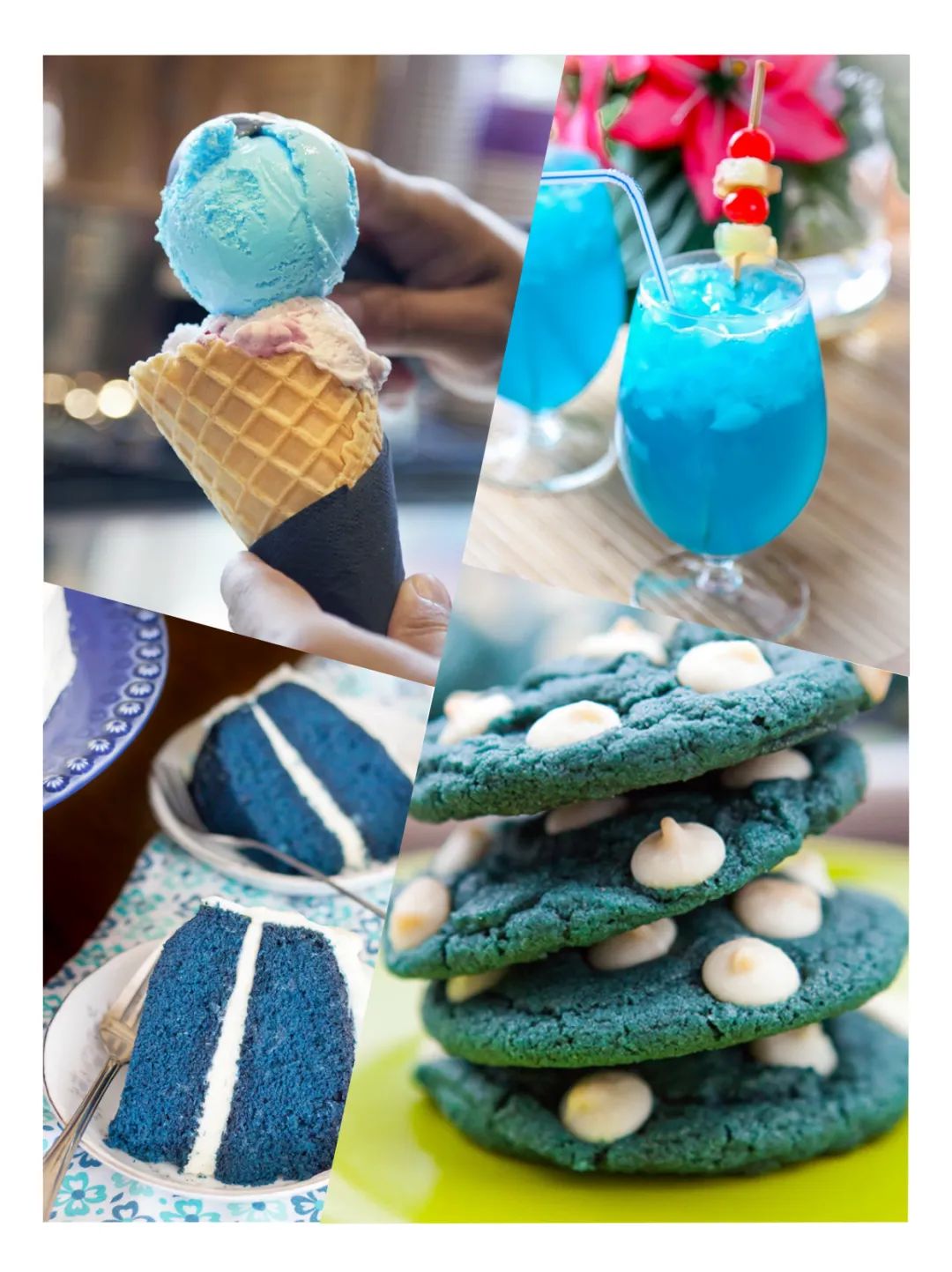

The food additive Gardenia blue is derived from the fruit of gardenia, which undergoes extraction using water or edible ethanol, enzymolysis (β-glucosidase), addition of an edible amino acid combination, refining, and other processes. This natural pigment has gained widespread usage in numerous countries worldwide and is also approved for consumption in China as an edible pigment under GB2760-2014 "Food Additive Use Standard".
(Slide the mouse up and down to see more criteria for carbon black)
Gardenia blue exhibits a vibrant color with strong coloring power, excellent light resistance, and good heat resistance. Its pH stability ranges from 4 to 10. The specific usage of this food additive is categorized and regulated by the "GB2760-2014 National Food Safety Standard For Food Additives Use." For instance, the maximum allowable amount in frozen drinks (except 03.04 edible ice) and baked goods is 1.0g/kg, while for cooked nuts and seeds (only fried ones), instant rice and noodle products, food fillings, condiments (except salt and salt substitutes), protein drinks, and solid beverage products it is limited to 0.5g/kg. In flavored beverages (fruit-flavored only) and prepared alcoholic products, the maximum permitted amount is 0.2g/kg.

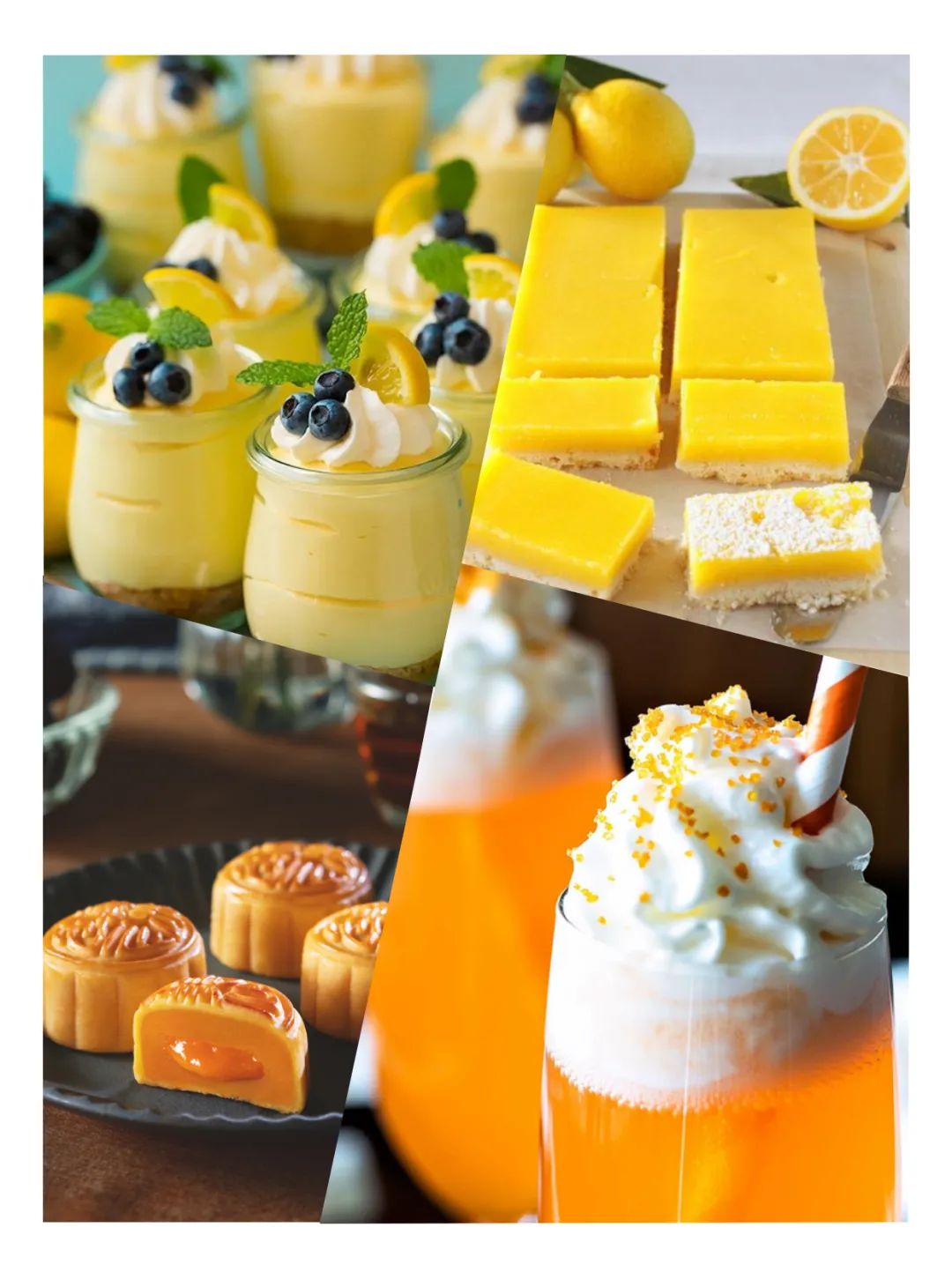

Gardenia yellow serves as a natural food additive extracted and refined from the fruit of Gardenia Jasminoides Ellis. Known as crocin or gardenia yellow, it exhibits orange-yellow to orange-red for powder products; yellow-brown for extract products; yellow to orange-red for liquid products. It belongs to the carotenoid series. Crocetin and crocetic acid are its main components.
(Slide the mouse up and down to see more criteria for carbon black)
Gardenia easily and instantly dissolves in water forming a transparent yellow liquid but remains insoluble in oil while being soluble in ethanol and propylene glycol. It demonstrates good light resistance as well as heat resistance. While at low pH values it tends to undergo browning easily and staining protein and starch more significantly. Specific industry categories regarding its usage can be found within the relevant provisions of "GB2760-2014 National Food Safety Standard For Food Additives Use" The maximum allowed amount includes biscuits, margarine (including butter/margarine mixes), pickled vegetables, cooked nuts/seeds (fried only), instant rice/noodle products,fillings for grain products, cooked meat products (cooked poultry meat products only), condiments (except 12.01 salt and salt substitute products), solid beverage products is 1.5g/kg, and the maximum usage is 0.3g/kg in flavored drinks (fruit flavored drinks only), candy, frozen drinks (except 03.04 edible ice).
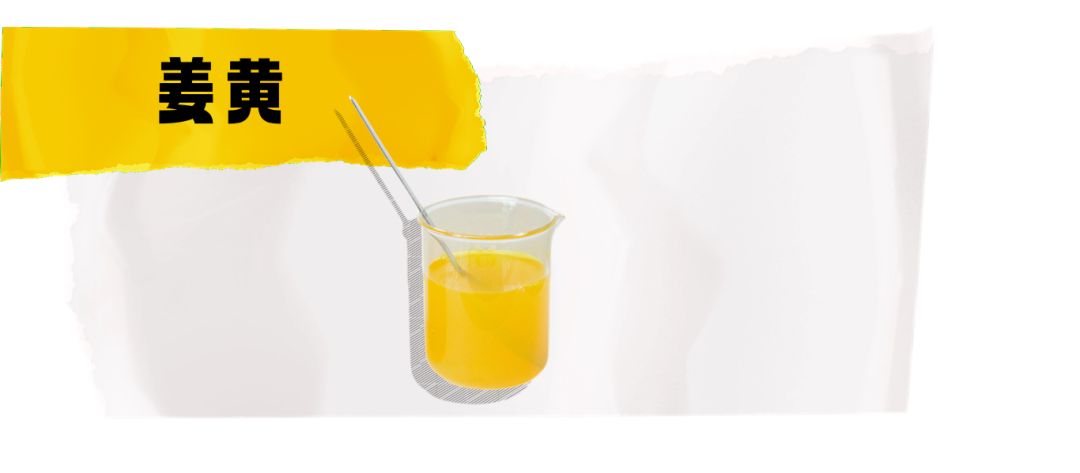
Turmeric is extracted from the rhizome of turmeric (CurCumaLonga L·) and refined by organic solvent. It has a bright yellow color and is often used in the food industry to add color and aroma to products. It is considered to be one of the most valuable natural food pigments. It is also one of the natural pigments with high safety stipulated by the United Nations Food and Agriculture Organization (FAO) and the World Health Organization (WHO).
(Slide the mouse up and down to see more criteria for carbon black)
Turmeric has the characteristics of strong coloring, bright color, strong thermal stability, safe and non-toxic, but it has poor light resistance and needs to be stored in the dark. The specific use industry category and usage please refer to the relevant provisions in the GB2760-2014 National Food Safety Standard For Food Additives Use. Such as frozen drinks (except 03.04 edible ice), jam, cooked nuts and seeds (only deep-fried nuts and seeds), cocoa products, chocolate and chocolate products (including cocoa butter substitute chocolate and products) and candies, convenient rice noodle products, biscuits, condiments, beverages (except 14.01 packaging drinking water) can be used according to the production needs and process requirements, and the maximum use of milk powder and cream powder products is 0.4g/kg, the maximum use of air popped products is 0.2g/kg, the maximum use of starch balls products is 1.2g/kg.
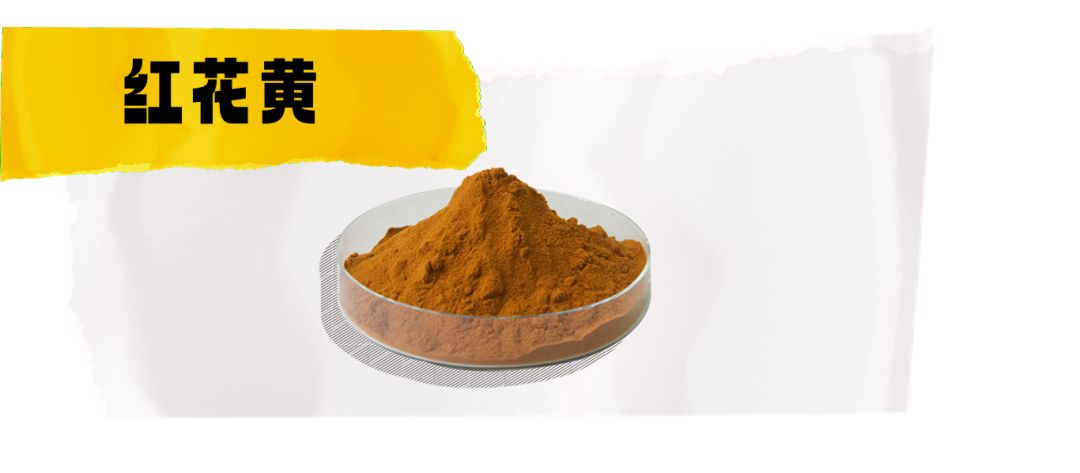
Carthamins yellow, also known as Saffron yellow, is a natural food additive. It is a natural pigment extracted and refined from the petals of Carthamus tinctorius L. by water. It appears in different forms, such as yellow to dark brown powder, extract, liquid; It is soluble in water, dilute ethanol, dilute propylene glycol, almost insoluble in anhydrous ethanol, insoluble in acetone, petroleum ether, ether, grease, etc. It is yellow in acidic solution and orange in alkaline solution. Water solution of heat resistance, resistance to reduction, salt resistance, bacterial resistance are strong, light resistance is poor.Water solution will fade or change color when it encounters calcium, tin, magnesium, copper, aluminum plasma, and will turn black when it encounters iron ions. Carthamins yellow shows good coloring performance for starch, but poor coloring performance for protein.
(Slide the mouse up and down to see more criteria for carbon black)
Carthamins yellow is a common natural pigment used to enhance yellow or orange color in food.It has the advantages of natural source, color stability, etc.The specific industry category and usage amount please refer to the relevant provisions in GB2760-2014 National Food Safety Standard For Food Additives Use.The maximum usage is 0.5/kg for frozen drinks (except 03.04 edible ice), pickled vegetables, cooked nuts and seeds (only for fried nuts and seeds), convenient rice noodle products, food product stuffings, preserved meat products (such as bacon, cured meat, duck, Chinese ham, sausage), condiments (except for salt and salt substitute products on 12.01), and puffy food, and in the prepared wine, fruit and vegetable juice (pulp) drinks, jelly, candy, canned fruit, canned vegetables, candied cold fruit the maximum amount is 0.2g/kg.
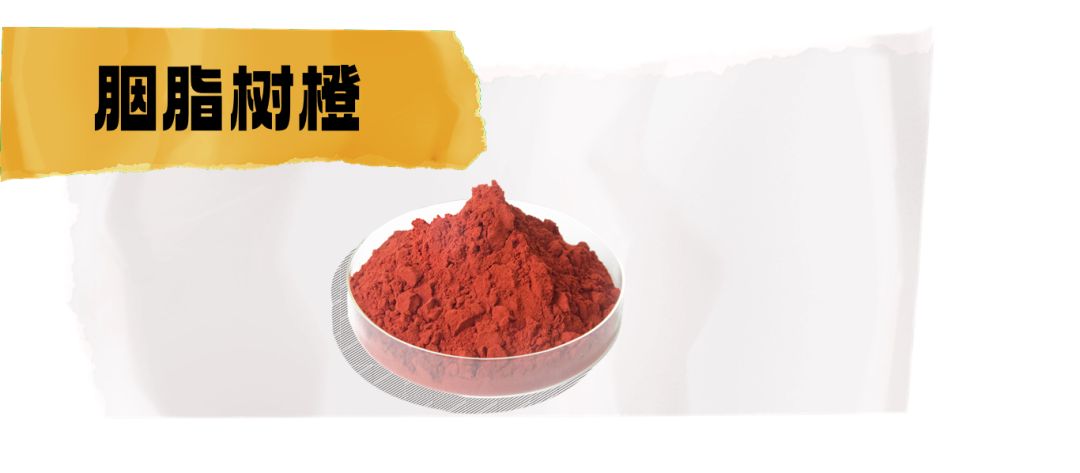
The food additive Annatto extract was extracted from the outer seed bark of carmine tree seed by solvent or cold weak alkali aqueous solution, and the food additive Carmine norerythroxylin was obtained by hydrolysis and refining through hot alkaline solution. It’s a natural edible yellow-orange pigment obtained from the seed skin of the Bixaorellana (also known as the redwood tree, which grows mainly in Brazil, Ecuador, Jamaica, and the West Indies). It usually exhibits in the form of dark reddish brown to purplish-red powder, suspension, or solution.
(Slide the mouse up and down to see more criteria for carbon black)
Annatto extract is a common natural food additive used to enhance yellow or orange color in food.It has the advantages of natural source, color stability, etc.The specific industry category and usage please refer to the relevant provisions in the "GB2760-2014 National Food Safety Standard For Food Additives Use". For example, the maximum usage in cooked cheese, flavored remade cheese, frozen drinks (except 03.04 edible ice), jam, candy, baked food and biscuit products is 0.6g/kg.The maximum dosage in compound flavoring products is 0.1g/kg, and in collagen casing products it can be used according to the production needs.
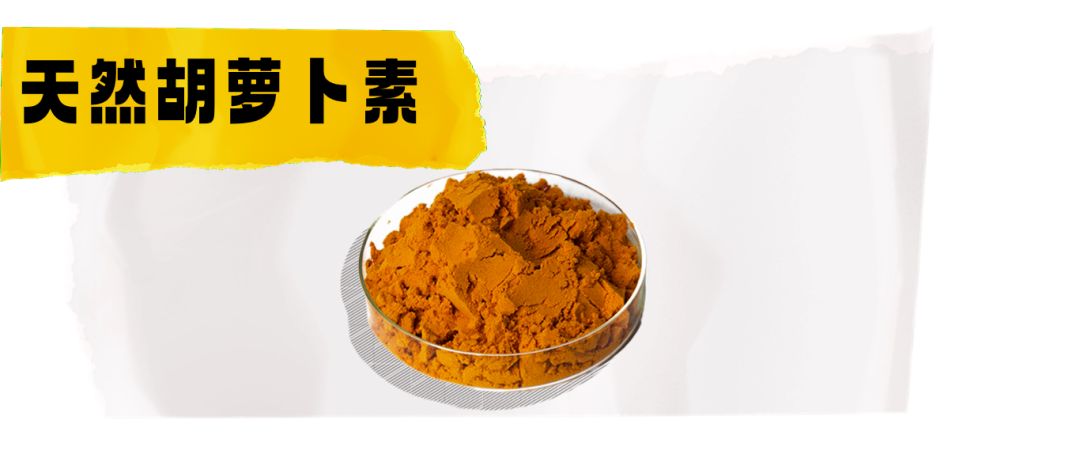
Natural carotene is a food additive which is extracted from palm fruit by solvent extraction and refining. The main coloring substances are β-carotene and α-carotene, and β-carotene is the majority. The main components are β-carotene, and contain α-carotene, δ-carotene) ,ζ- carotene and other carotene.
(Slide the mouse up and down to see more criteria for carbon black)
It is often used in food to enhance the color and improve the appearance of products. It has the characteristics of natural source, good stability and rich nutrition. Specific industry categories and usage please refer to the relevant provisions of the "GB2760-2014 National Food Safety Standard For Food Additives Use". It can be added appropriately according to production needs in most product categories. For specific categories, please refer to Table A.3 of GB2760 for the list of food categories with exceptions for appropriate quantities of food additives according to production needs (see the bottom of the article).

Beta-carotene is a fat-soluble compound belonging to the carotenoid family, which is an orange-yellow natural pigment commonly found in nature. It is abundantly present in plants and imparts rich yellow and orange hues to fruits and vegetables. Beta-carotene possesses natural sourcing, safety, and health benefits. It is frequently utilized as a water-soluble food coloring agent, exhibiting shades of orange or yellow in dilute solutions and turn into orange-red with increasing concentration. Notably, it remains unaffected by reducing agents like ascorbic acid but can fade when exposed to heavy metal ions, particularly Fe3+. Moreover, it demonstrates excellent color performance for oily foods.
(Slide the mouse up and down to see more criteria for carbon black)
β-carotene is a common natural food coloring agent. It has the characteristics of natural source, safety and health and is used to enhance yellow or orange color in food. The specific industry category and usage amount please refer to the relevant provisions in GB2760-2014 National Food Safety Standard For Food Additives Use. In water-oil fat emulsified products (except 02.02.01.01 butter and concentrated butter), flavoured fermented milk, concocted milk, concocted milk powder and concocted cream powder, ready-to-eat flavoured food with milk as the main ingredient or its preformed products (excluding ice cream and flavoured fermented milk), fat emulsified products other than category 02.0; Including mixed and/or flavoured emulsified fat products, fatty desserts, frozen drinks (except 03.04 edible ice), candied cold fruits, liquid complex flavorings (excluding 12.03, 12.04), jellies, plant-based beverages, instant rice noodle products, frozen rice noodle products, cereals and starchy desserts (e.g. rice pudding, tapioca pudding), baked goods, biscuits, jam products, the maximum using amount is 1.0g/kg; in the coating of confectionery and chocolate products, decorative confectionery (e.g. craft molding, Or for cake decoration), top decoration (non-fruit materials) and sweet juice products, the maximum using amount is 20g/kg; in prepared meat products (raw meat with conditioning ingredients), cooked meat products, the maximum using amount is 0.02g/kg.

Lutein is made from Tagetes erecta L oleoresin, saponified, extracted and refined. It is orange to orange powder.
(Slide the mouse up and down to see more criteria for carbon black)
Lutein is a natural colorant with natural ingredients, high safety but slightly poor stability. It is easily affected by oxygen, light, heat, metal ions, pH and other factors, and is widely used in various food industries. For specific industry categories and usage, refer to the relevant provisions in GB2760--2014 National Food Safety Standard For Food Additives Use. For example, the maximum using amount of frozen drinks (except 03.04 edible ice) products is 0.1g/kg, the maximum use of mixed milk, flavored fermented milk, jam, canned cereal products is 0.05g/kg, and the maximum use of candy, instant rice and noodle products, baked food products is 0.15g/kg.
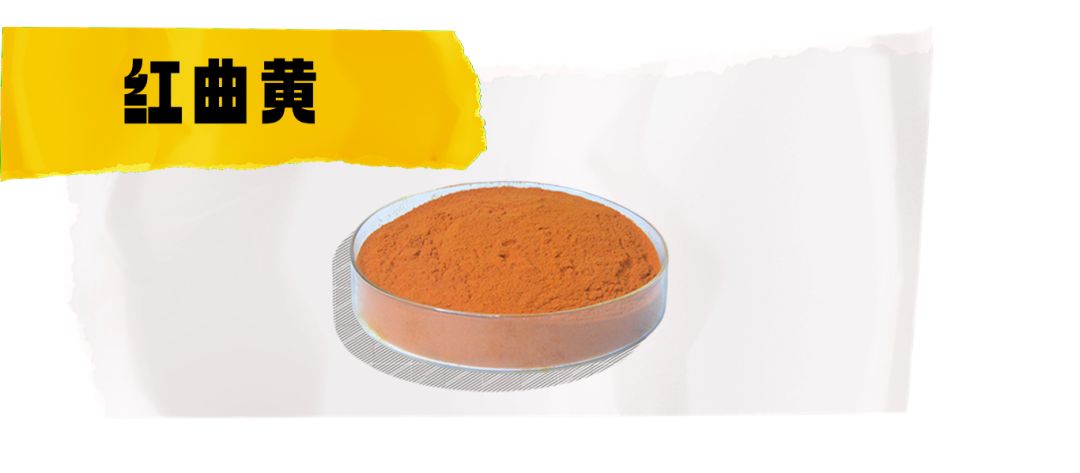
Monascus yellow pigment is a food additive made from red yeast rice, which is eluted by alkaline solution and separated to obtain Monascus red (or directly take Monascus red as raw material) by sulfides sulfonation and drying.
(Slide the mouse up and down to see more criteria for carbon black)
Monascus yellow is a natural food colorant with natural composition, relatively good safety and stability. It is widely used in various food industries. The specific industry category and dosage please refer to the relevant provisions in GB2760-2014 National Food Safety Standard For Food Additives.For example, convenient rice noodle products, pastries, pastries colorful ornament, cooked meat products, sauce and brine meat products, dried cooked meat products, Western-style ham (fire-cured, smoked, steamed ham), fruit and vegetable juice (pulp) beverages, protein beverages, carbonated beverages, solid beverages, instant coffee, flavored beverages, prepared wine, jelly products can be used according to the production needs and process requirements.
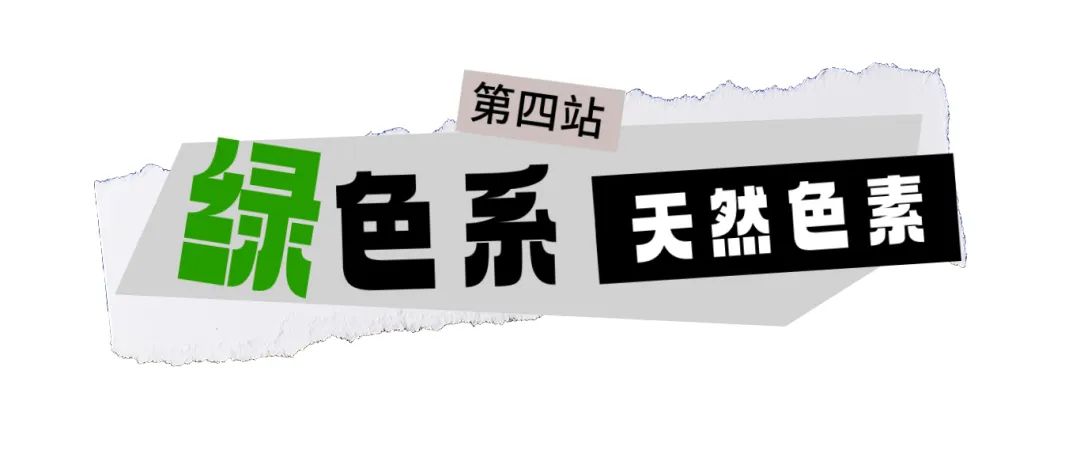
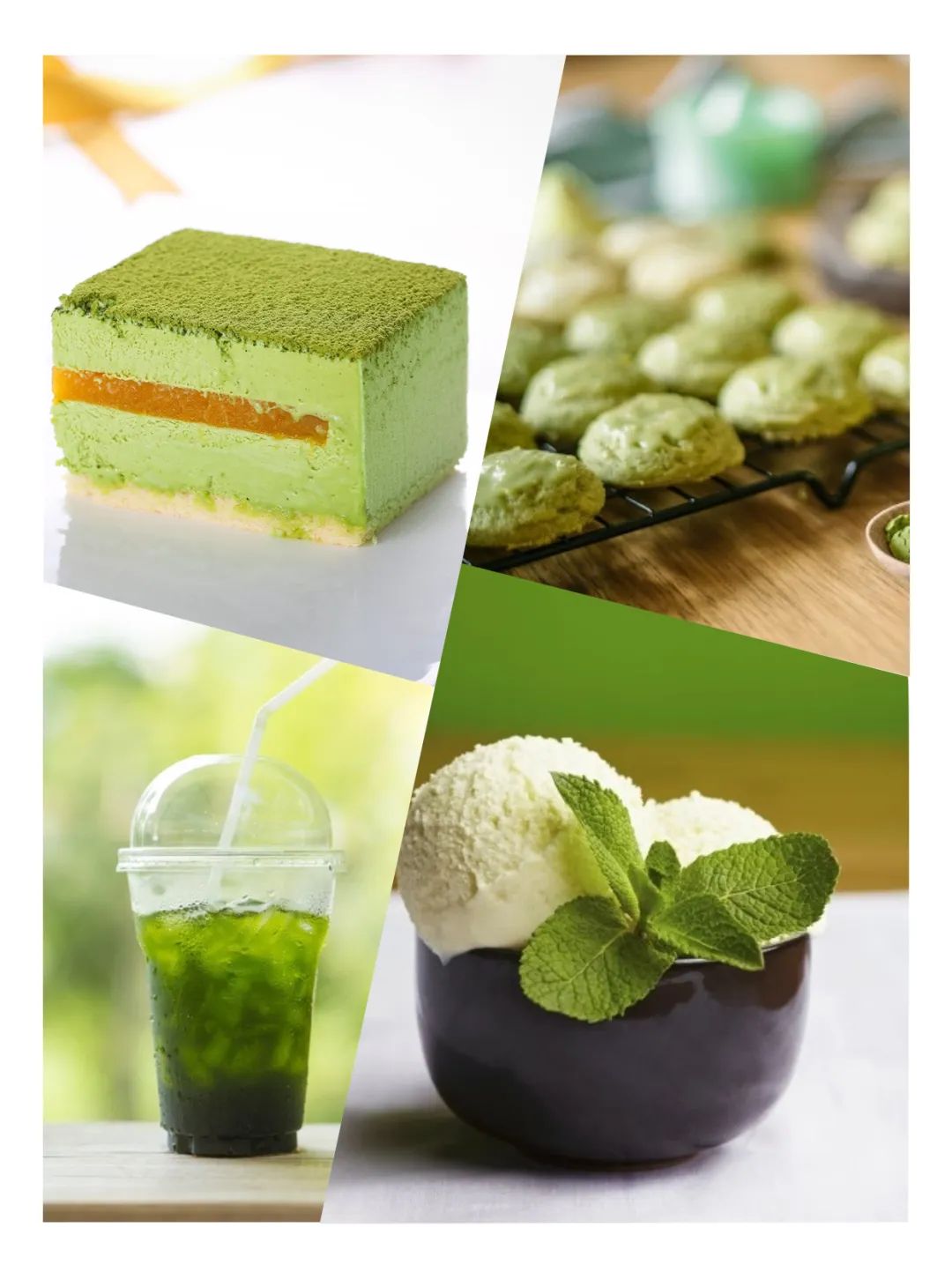
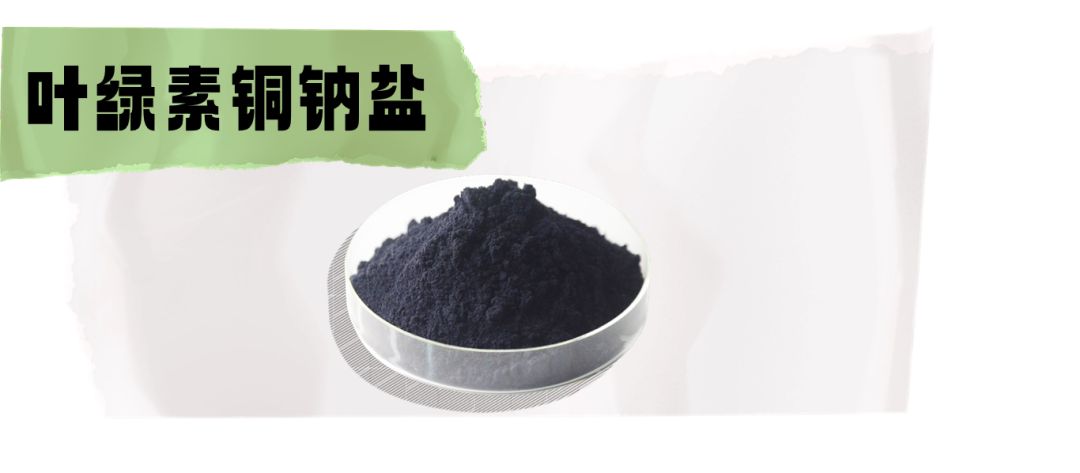
Sodium copper chlorophyll salt is a food additive made from mulberry leaves and silkworm sand by saponification and copper substitution. Soluble in water, insoluble in ether, petroleum ether, slightly soluble in ethanol, chloroform. The aqueous solution is transparent blue-green and unstable to light;The heat resistance is good, and the precipitation occurs when the pH value is less than 6.
Sodium copper chlorophyll salt has the characteristics of strong coloring power, bright color, strong thermal stability, safety and non-toxic, but poor light resistance needs to be stored away from light. For specific industry categories and usage, refer to the relevant provisions in GB2760-2014 National Food Safety Standard For Food Additives. For example, the maximum use of frozen drinks (except 03.04 edible ice), canned vegetables, processed nuts and seeds, candy, starch balls, beverages (except 14.01 packaged drinking water) is 0.5g/kg, and fruit and vegetable juice (pulp) beverage products can be used appropriately according to production needs.

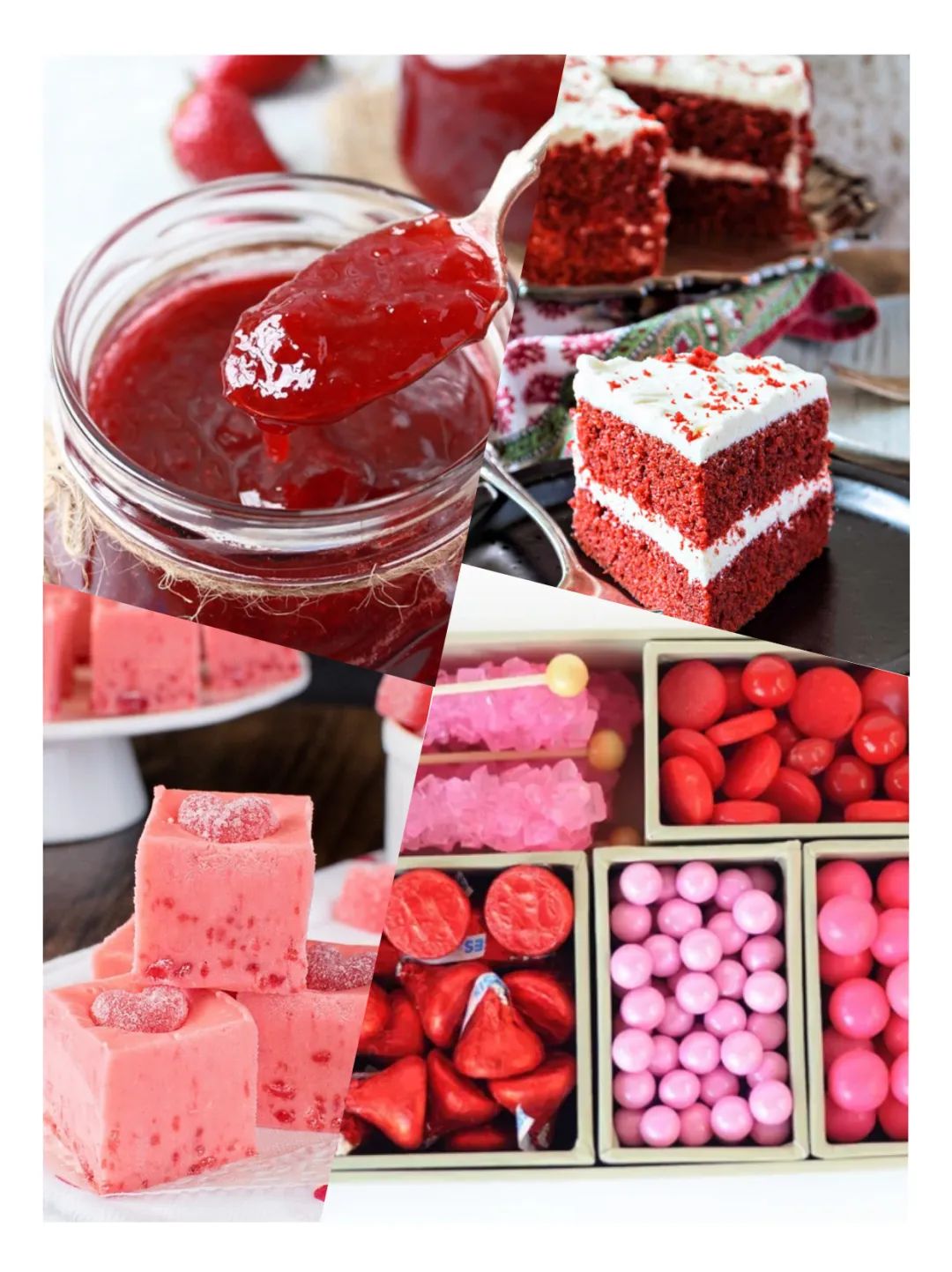
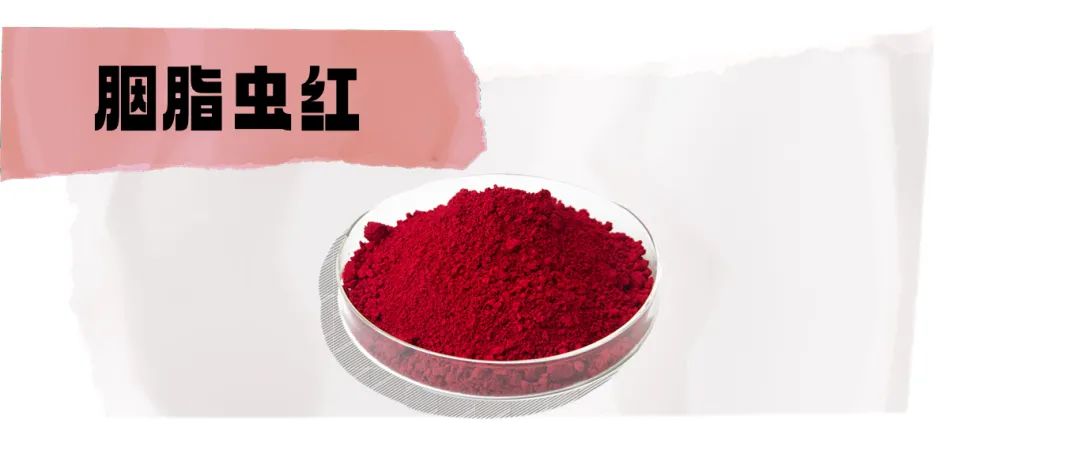
Carmine cochineal is a pigment extracted from the female cochineal parasitic on cactus plants. It is a red pigment extracted from the dry body of the female cochineal insects after grinding and using water. The main component is cochineal acid (also known as carmine acid, is a anthraquinone derivative). Cochineal is native to Central and South America, Mexico and other places. Cochineal is an anthraquinone derivative that appears as a red rhomboid crystal or reddish brown powder. Insoluble in cold water, slightly soluble in hot water or ethanol. Soluble in alkali, insoluble in dilute acid. Insoluble in ether, chloroform, benzene. Cochineal red pigment is an excellent natural edible red pigment. It is bright purple red in weakly acidic or neutral environment, but its hue changes under alkaline conditions. At pH value of 5.7, the pigment solution has the maximum absorption at wavelength 494nm.
(Slide the mouse up and down to see more criteria for carbon black)
The storage and thermal stability of carmine cochineal is good, but the light stability is poor. In addition, the oxidation resistance of this pigment is weak, and it is greatly affected by metal ion Fe3 +. However, reducing substances can protect the color of pigment.In addition, the application scope of cochinetin is relatively wide, and the specific use industry category and dosage refer to the relevant provisions in the "GB2760-2014 National Standard for Food Safety Standard for the use of Food Additives". It can be used in collagen casing products according to the production needs. The maximum amount used in cheese and recycled cheese and its similar products, puffed food is 0.1g/kg, the maximum amount used in fruit and vegetable powder, solid drinks, tea (class) beverage products is 0.6g/kg, and the maximum amount used in complex seasoning products is 1.0g/kg.On September 07, 2022, the maximum usage of prepared meat products (raw meat with prepared materials) was added to 0.08g/kg by the announcement on lactase and other seven "three new foods" (No. 5 of 2022).
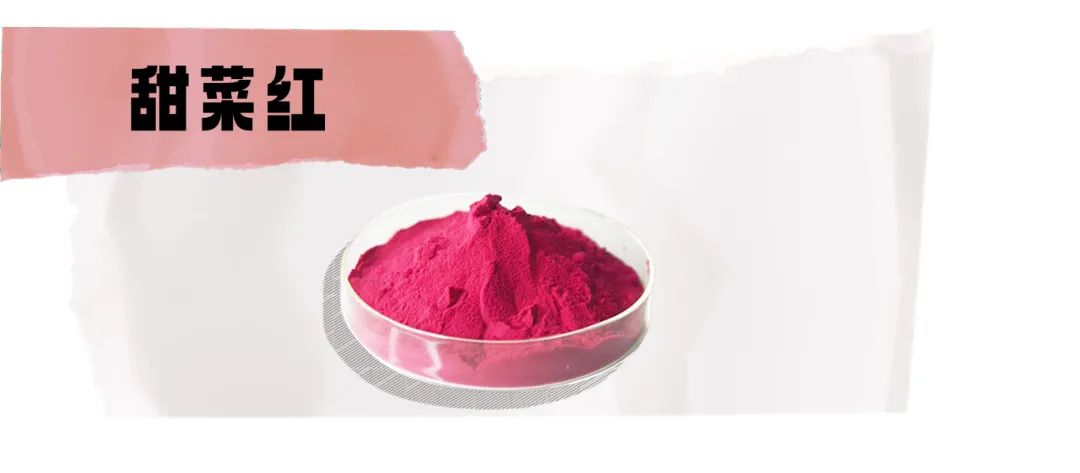
Beet red, also known as bee troot red, is a food additive made from the extraction of red beet with water by spraying and drying, easily soluble in water, milk, 50% ethanol or propylene glycol aqueous solution, the aqueous solution is red to red purple, pH3.0 ~ 7.0 is relatively stable, PH4.0~5.0 is the most stable. Good staining, but poor heat resistance.
(Slide the mouse up and down to see more criteria for carbon black)
Beet red is a common natural food additive used to enhance the color of food and improve the appearance of products. It has the characteristics of natural source and good stability. Specific industry categories and usage please refer to the relevant provisions of "GB2760-2014 National Standard for Food Safety Standard for the use of Food Additives", and can be added appropriately according to production needs in most product categories. For specific categories, please refer to Table A.3 of GB2760 for the list of food categories with exceptions for food additives used in appropriate quantities for production (see the bottom of the article).
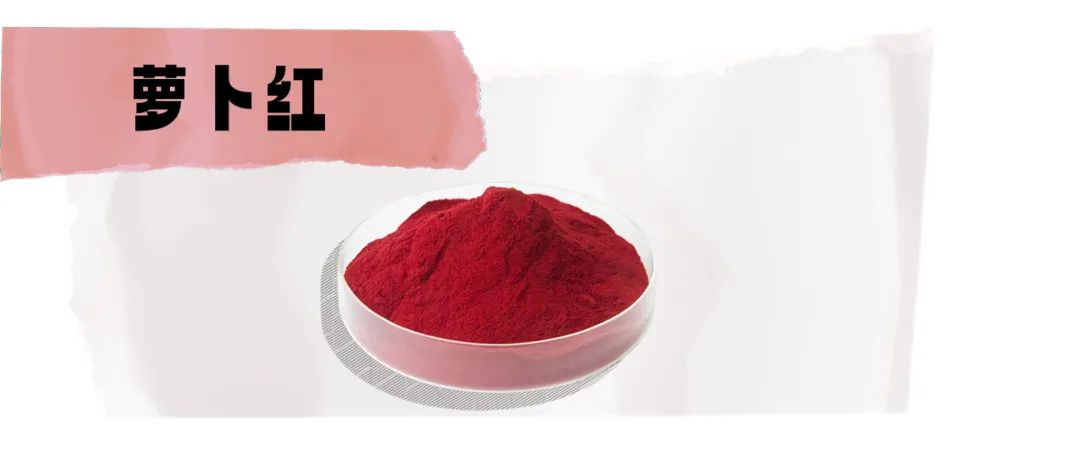
Radish red is a natural pigment extracted and refined from red radish. It is red to dark red powder or liquid, with a slight peculiar odor of radish. It is easily soluble in water and ethanol solution, but insoluble in non-polar solvents.
(Slide the mouse up and down to see more criteria for carbon black)
Radish red is a common natural food additive used to enhance yellow or orange color in foods. It has the advantages of natural origin, color stability and so on. Specific industry categories and usage please refer to the relevant provisions of "GB2760-2014 ational Standard for Food Safety Standard for the use of Food Additives", and can be applied appropriately according to production needs in most product categories.

Monascus red is a liquid medium with rice as the main raw material, which is cultured, extracted, concentrated and refined by monascus liquid fermentation; or take red koji rice as raw material, by extraction, concentration, refining to obtain food additives, monascu red natural pigment is light red to black purple powder, paste or liquid.
(Slide the mouse up and down to see more criteria for carbon black)
Monascus red has the characteristics of strong coloring, bright color, safe and non-toxic, but it has poor light resistance and needs to be stored in the dark. The specific industry category and using amount please refer to the relevant provisions in GB2760-2014 National Food Safety Standard for Food Additive Use. Such as blended milk, blended condensed milk (including sweetened condensed milk and blended condensed milk using non-milk raw materials, etc.), frozen drinks (except 03.04 edible ice), jam, new soy products (soy protein and its puffing food, soy vegetarian meat, etc.), cured meat products (such as bacon, cured meat, duck, Chinese ham, sausage), cooked meat products, condiments (excluding 12.01 salt and salt substitute products) can be used appropriately according to production needs and process requirements, while the maximum use of pastry and moon cake products is 0.9g/kg.
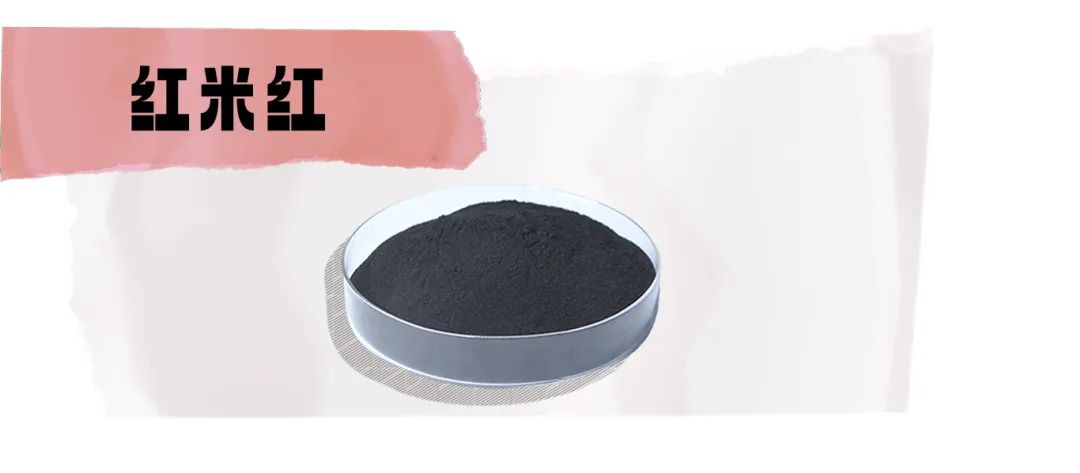
Red rice red, also known as black rice pigment and black rice red pigment, is a food additive made from red rice (Oryza sativa L.) , which is easily soluble in water and ethanol, but insoluble in acetone and petroleum ether. It is sensitive to oxidants, while sodium, potassium, calcium, barium, zinc, copper and trace iron ions have no effect on it, but it becomes rose red when it meets tin; in the case of lead and large amount Fe2+, it will fade and precipitate; PH value of 1-6 is red, and PH value of 7-12 can become light brown; Under acidic conditions (Ph1~6) it is red, and under alkaline conditions (pH7~12) it becomes reddish-brown to yellow.
Red rice red has the advantages of natural source, safety, good stability, heat resistance, light resistance, etc. The specific use of industry categories and usage please refer to the relevant provisions of the "GB2760-2014 National Food Safety Standard for Food Additive Use". In milk, frozen drinks (except 03.04 edible ice), confectionery, drinks containing milk, wine preparation can be added according to the production needs.
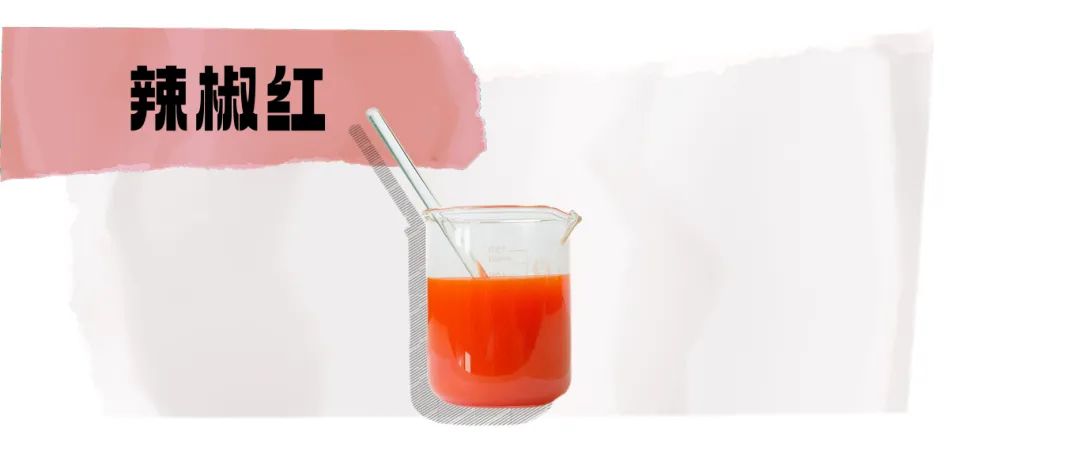
Paprika red is a natural pigment made from the peel and its products of Capsicum annuum L. through the process of extraction, filtration, concentration and removal of capsaicin. It is a deep red oil liquid.
(Slide the mouse up and down to see more criteria for carbon black)
Paprika red is bright in color, safe and non-toxic, with strong coloring power, resistance to light, heat, acid, alkali, and not affected by metal ions and other characteristics.The specific industry categories and usage amount please refer to the relevant provisions of the "GB2760-2014 National Food Safety Standard for Food Additive Use". For example, frozen drinks (except 03.04 edible ice), cooked nuts and seeds (only fried nuts and seeds), candy, instant rice and noodle products, pastries, biscuits, cooked meat products, jelly, puffed food products can be used in appropriate amounts according to production needs and process requirements; The maximum use of frozen rice and noodle products is 2.0g/kg, and in the announcement of 15 kinds of "three new foods" such as leaf grass on October 22, 2021 (No. 9 of 2021), it can be used appropriately in prepared meat products (raw meat added conditioning materials) and other (Konjac gel products only) products according to production needs and process requirements.
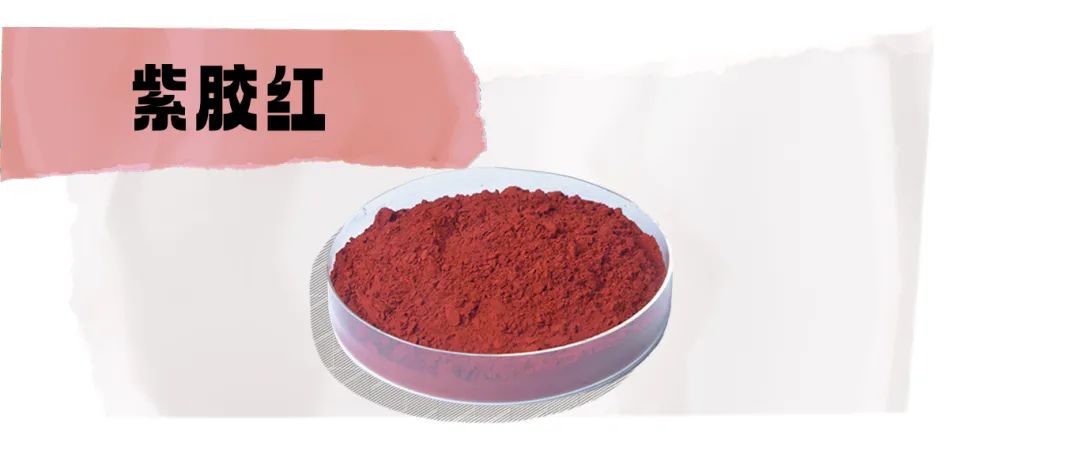
Lac red (also known as shellac red), a food additive obtained by hydrochloric acid method with purple collagen glue as raw material. Lac red (also known as shellac red) is a mixture of natural organic acids, solubility in water at 20℃ is 0.0335g, solubility in 95% ethanol is 0.916g, easily soluble in sodium bicarbonate, sodium carbonate and sodium hydroxide solution. In the solution with PH greater than 6, it is easy to form water-insoluble lake with metal ions other than alkali metals. The color of the solution changes with the PH value, PH less than 4 is orange yellow, PH4·0 ~ 5·0 is orange red, pH greater than 6 is purple red.
(Slide the mouse up and down to see more criteria for carbon black)
Lac red is a natural food colorant with natural composition, safety and good stability, which is widely used in various food industries. The specific industry category and usage amount please refer to the relevant provisions in GB2760-2014 National Food Safety Standard for Food Additive Use. For jam, cocoa products, chocolate and chocolate products (including cocoa butter substitute chocolate and products) and candy,, candy and chocolate products coating, compound seasoning, fruit and vegetable juice (pulp) beverages, carbonated beverages, flavored beverages (only fruit beverages), and prepared wine products, the maximum usage is 0.5g/kg, in which solid beverages need to be increased by dilution Usage.
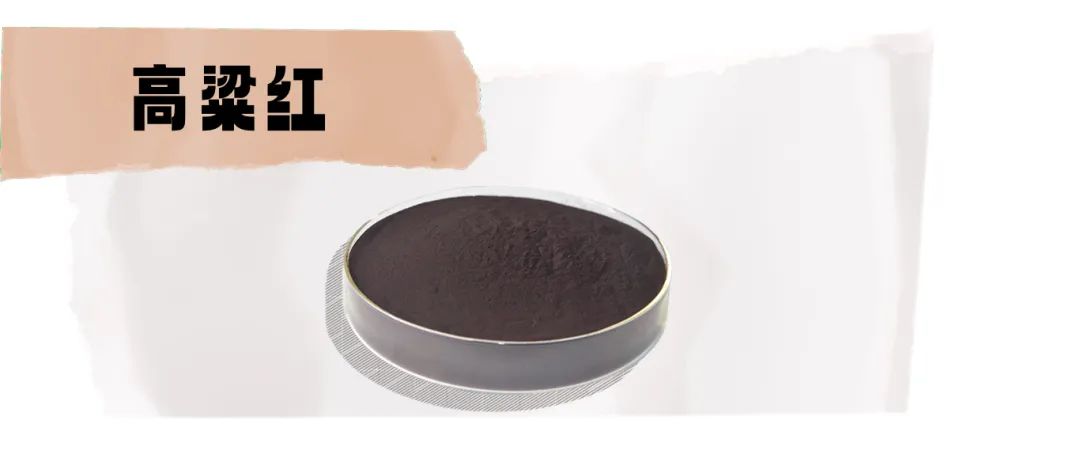
Sorghum red is a food additive made from black-purple or reddish-brown Sorghum Vulhare pers shells extracted with water or dilute ethanol solution, concentrated and dried. As a natural edible additive, sorghum red has many advantages. First, it is extracted from natural plants, does not contain harmful chemicals, and is relatively safe and reliable. Secondly, sorghum red has good heat resistance and stability, which is suitable for a variety of food processing processes.In addition, sorghum red also has certain antioxidant properties, which helps to protect the quality of food and prolong the shelf life.
The color of Sorghum red is natural and soft, and has the characteristics of temperature resistance, light resistance and good solubility. Specific industry categories and usage please refer to the relevant provisions of the "GB2760-2014 National Food Safety Standard for Food Additive Use", and can be added appropriately according to production needs in most product categories. For specific categories, please refer to Table A.3 of GB2760 for the list of food categories with exceptions for food additives used in appropriate quantities for production (see the bottom of the article).
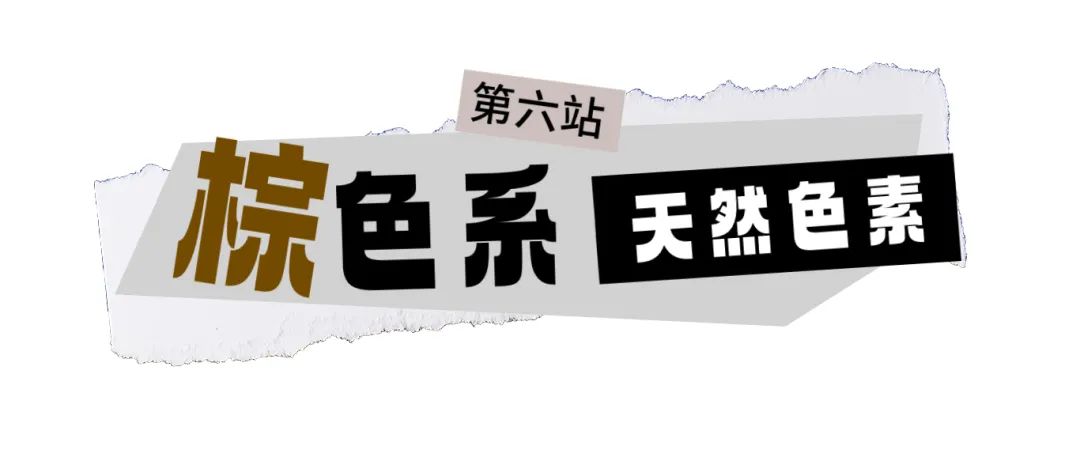


Cacao husk pigment is a food additive made from cacao shells, extracted, refined, concentrated and dried by aqueous solution.
(Slide the mouse up and down to see more criteria for carbon black)
Cocao husk pigment is a natural food colorant with relatively good natural composition, safety and stability, widely used in various food industries. The specific use of industry categories and usage please refer to the relevant provisions of the "GB2760-2014 National Food Safety Standard for Food Additive Use". The maximum consumption of products such as frozen drinks (except 03.04 edible ice) and biscuits is 0.04g/kg, and the maximum use of cocoa products, chocolate and chocolate products, (including cocoa butter chocolate and products) and candy, colors on pastry the maximum amount is 3.0g/kg, baked food filling and surface paste, the maximum use of wine products is 1.0g/kg.
There are many choices of natural pigments. In addition to the established color series, there are more different color needs that can be met through the combination of customized natural pigments.

For more natural pigments and related information, please call us or mail us:
COMPANY: ZHUHAI JINGHAO BIOLOGICAL-TECH CO.,LTD.
ADDRESS: AREA B, 4-3 FLOOR , NO. 5 BUILDING , CHUANGYE WEST ROAD, SHUANGLIN SECTION, LIANGANG INDUSTRIAL ZONE, JINWAN DISTRICT, ZHUHAI CITY, GUANGDONG PROVINCE, CHINA. P.C. 519000.
WEB.: http://www.biolo-tech.com E-MAIL: info@biolo-tech.com
TEL.: 0756-6255288/0756-6255280 MOB.: 13928090373




Hot search label:
Carbon black、 Gardenia yellow、 Curcuma longa、 Natural carotene、 Tripotassium glycyrrhizinate、 Carmine、 Compound colorant、 Complex customizationZhuhai Jinghao Biological-tech Co., Ltd 粤ICP备20042151号